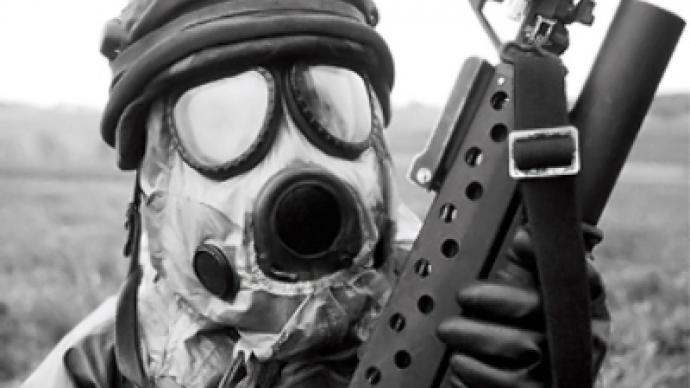Survivalists stock up for End of Days

They are ready for a catastrophe of a global scale every minute of their lives and are prepared to meet the challenge wherever they are – at home, in the office, or just walking about.
The people who lay salt and canned food in stores all year around do not surprise experts anymore.
In St. Petersburg alone, there are more than 10,000 getting ready for the End of Days right now, informs Petersburg Business.
Russian survivalists call this speculative catastrophe the SHTF-day. Leaving aside atomic bomb shelters that were built everywhere in the USSR some twenty years ago, 'survivance' as a trend became popular in Russia in the early 2000s, when Russian scientist Valentin Ponomarenko published his ‘Problem 2033.'
This popular and quite-often quoted book is no less than an inventory of the resources of our planet (most of the book is graphics and tables). The author makes a conclusion that by 2033, the resources will end, and people will be busy resolving the problem of overpopulation by killing each other by all convenient means. The verdict of this tract is simple – earth cannot bear more than 2 billion people, the rest are needless.
Several years later, another Russian writer Dmitry Glukhovsky published his ‘Subway 2033,’ which strangely enough repeats the magic date, and is completely dedicated to the problem of survival in the system of Moscow's subway stations after the world is destroyed in a global nuclear conflict.
All these apocalyptic prognoses would have been in vain if not for the economic disaster we all are living in right now. Economic meltdown easily draws into survivalists’ ranks ordinary middle-class people. There are several websites where Russians exchange experiences and ‘strategic’ information about jobless rates in their regions, the availability of canned food, and how to officially buy and register Saiga-12 semi-automatic shotguns.
It looks like St. Petersburg runs ahead of the rest of the Russian population, because its citizens have a “genetic memory” of the WWII blockade of the city by German troops. Back then, the situation was so dramatically grave that sometimes it led to cannibalism, and people do not forget such horrors even if they are half a century old.
Survivalists learn how to live without electricity, gas, fuel, and other fruits of civilization. They learn shooting and hand-to hand combat skills. Many of them are either ex-military men, hunters or both, so they already know a thing or two about living on their own.
It is believed that up to 2% of Russian survivalists have already left big cities and settled down “deep in the woods” getting acquainted with the new uncivilized reality.
They are set to establish autonomous colonies capable of resisting in all directions.
Those who have chosen to stay in the big city install double steel doors and steel bars on the hermetically-sealed insulating glass units of their apartments. They already have gas masks, registered shotguns with lots of ammo, fire extinguishers, filters of all kinds for every occasion, medicine chests, and surgical instruments.
They even buy furniture made of quality pine wood in case it comes to burning it in stoves they have purchased in better times.
Survivalists of St. Petersburg are organized so well they are even ready to establish defenses and make a stand in every block – the city is preliminarily divided into sectors, and every one of them has a person responsible for its defense.
Those of them who are relatively young spend their spare time reading practical guides for survival and playing the S. T. A. L. K. E. R. computer game that literally simulates the zone around the Chernobyl atomic power stations. The game sold 1.5 million copies in Russia alone.












